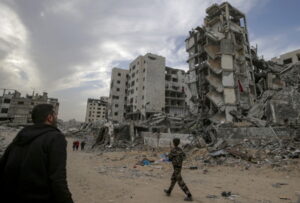As temperatures climb, so does violence. At least that’s the conclusion reached by researchers looking at how ancient cultures in the south central Andes responded to climate change about 1,000 years ago. It may be an important cautionary tale.
Rising sea levels. An expanding troposphere. An increase in the spread of disease-carrying mosquitoes. Even harsher allergy seasons and disrupted sleep patterns. As if we didn’t already have enough to worry about from climate change, a new study out of UC Davis says that when the climate shifted between A.D. 470 and 1500, violence among people in the south central Andes increased. If the same patterns hold true today as the world experiences dramatic climate shifts, brutal clashes could unfold a la the 1979 dystopian film “Mad Max.”
Viktor Orban accuses Soros of scheming to “incite” another migrant crisis
To reach their conclusion, the UC Davis researchers looked at data from the examination of 2,753 skull fractures from human remains harvested at 58 archaeological sites. They then used the ice record from the Quelccaya glacier found in present day Chile, Peru, and Bolivia to map what was happening in the climate. They found that for every 10-cm decrease in annual ice buildup caused by rising temperatures from what’s known as the medieval warm period, the level of violence between people more than doubled. This they concluded by the number of head injuries found in the fossil record, a measure that is frequently employed by archaeologists to study cultural violence.
Read more: New Atlas
Ask me anything
Explore related questions





